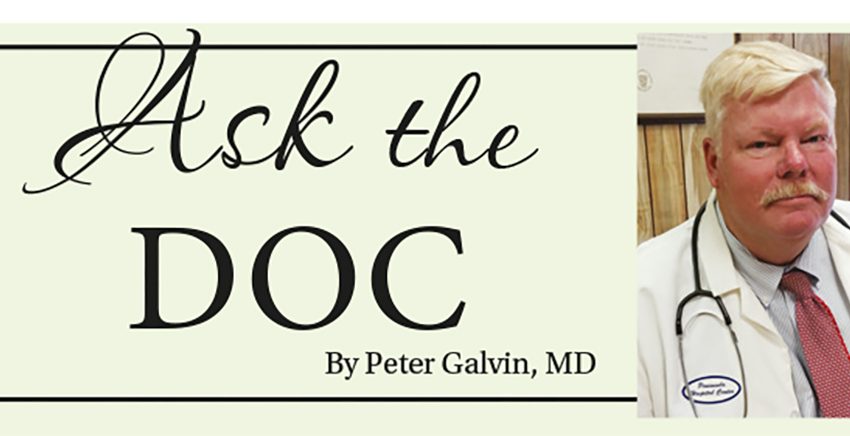Heavy Metal

By Peter Galvin, MD
Lead is a naturally occurring heavy metal that can be harmful to humans. Lead exposure can occur by ingesting water, food, objects, or soil that is contaminated by lead or by breathing air that contains lead dust. Common sources of lead include chipped or peeling paint in older homes, water from lead pipes, and soil near highways, factories, or airports. Certain jobs (such as construction, battery manufacturing, and mining) and hobbies (such as repairing old homes or using pigments that contain lead) are linked to lead exposure. Some imported toys, jewelry, traditional medicines, spices, and candles may also contain lead. For example, my house was built in 1903. About 25 years ago, the water main ruptured and had to be replaced. Imagine my surprise when the plumber called me out to see my old water supply pipe – lead. Lead was commonly found in paint, plumbing, fuel (leaded gasoline), and many other products.
Lead poisoning usually causes no immediate symptoms, but over time it causes damage to developing brains, so children exposed to even low levels of lead can have slowed growth and development and have problems with learning, behavior, hearing, and speech that may be permanent. Adults with lead poisoning are at increased risk of high blood pressure, heart disease, decline in cognitive function, anxiety, depression, and death. Young children are at the highest risk of lead poisoning because they tend to put their hands in their mouth. Lead can be transferred from a mother to her developing fetus and may be transmitted via breastfeeding.
Lead poisoning can be detected with a blood test. Treatment includes finding and removing the lead source, consuming a diet high in calcium and iron, and careful monitoring of lead levels. Individuals with very high levels can receive chelation therapy, which binds to the lead in the bloodstream and removes it. Prevention of lead poisoning involves finding and removing the source. In older houses, it may be wall and ceiling paint or lead water supply pipes (lead was commonly used for closet bends, which are the curved discharge pipes under a toilet. Since they are not on the supply side, they are often left in place). Homes with lead pipes can use special water filters but use bottled water for cooking and drinking. Prior to making a purchase, consumers can check the U.S. Consumer Product Safety Commission website (www.cpsc.gov/recalls) for products that have been recalled due to lead contamination. To decrease the chance of spreading lead-contaminated dust in a home, shoes should be removed before entering. Individuals who work with lead or lead paint (bridge painters, people who work in battery production) should change their clothes before coming home, keep their tools and shoes outside, and wash their clothes separately from the rest of the family.
For more information go to the website of the Centers for Disease Control and Prevention (www.cdc.gov) or the World Health Organization.
Please direct questions and comments to editor@rockawaytimes.com


